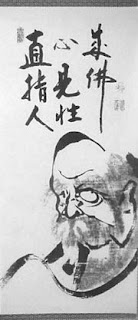Bhikkhu Bodhi, "Arahants, Buddhas, and Bodhisattvas"; Dhr. Seven (ed.), Wisdom Quarterly
Competing Buddhist Ideals
 |
| Enlightened disciple Ven. Sariputra |
This assumption is not entirely correct, because the earlier Theravāda
tradition has absorbed the bodhisattva ideal into its framework and
therefore recognizes the validity of both arahantship and buddhahood as
objects of spiritual aspiration.
 |
| Kwan Yin (Avalokitateshvara) Bodhisattva |
It is important to recognize that these ideals, as they have come
down to us, originate from different bodies of literature, stemming
from different periods in the historical development of Buddhism.
If
we don’t take this fact into account and simply compare these two
ideals as described in Buddhist canonical texts, we might assume that
the two were originally expounded by the historical Buddha.
And we might then suppose that the Buddha — living and teaching in
the Ganges plain in the 5th century B.C.E. — offered his followers a
choice between them, as if to say:
“This is the arahant ideal, which
has such and such features, and that is the bodhisattva ideal, which
has such and such features. Choose whichever one you like” [2].
The
Mahāyāna sūtras, such as the Mahāprajñāpāramitā Sūtra (the Great Perfection of Wisdom Discourse) and the
Saddharmapuṇḍarīka Sūtra (the Lotus Sūtra), give the impression
that the Buddha did teach both ideals.
Such "sūtras," however,
certainly are not ancient [but are more recent inventions]. To the contrary, they are relatively late
attempts to schematize the different types of Buddhist practice that
had evolved over a period of roughly 400 years after the
Buddha’s final nirvāna.
The oldest Buddhist texts — the Pāli Nikāyas and their
counterparts from other early schools (preserved most fully in the
Chinese Āgamas) — depict the ideal for the Buddhist disciple as the
arahant (fully enlightened person).
 |
| Zen is Japanese Mahayana |
Now some people argue that
because the arahant is the ideal of Early Buddhism, while the
bodhisattva is the ideal of later Mahāyāna Buddhism, the Mahāyāna
must be a more advanced or highly developed type of Buddhism, a
more ultimate teaching compared to the simpler, more fundamental (basic) teaching
of the historical Nikāyas.
That is indeed an attitude common among
Mahāyānists, which I will call “Mahāyāna elitism.”
There is an
opposing attitude common among conservative advocates of the
Nikāyas, an attitude that I will call “Nikāya purism,” which rejects all
later developments in the history of Buddhist thought as deviation
and distortion, a fall away from the pristine “purity” of the ancient
teaching.
Taking the arahant ideal alone as valid, Nikāya purists
reject the bodhisattva ideal, sometimes forcefully. More



















































































































































































































































No comments:
Post a Comment